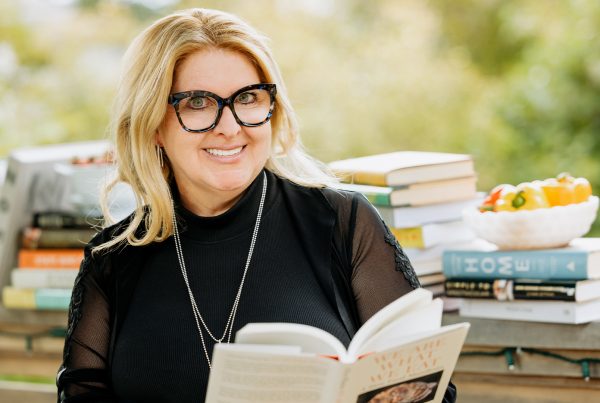Ted Reader makes a conscious effort in his kitchen when it comes to keeping his staff morale high and ensuring food waste is top of mind when managing his business. As the proud owner of The Joint restaurant in Whitby Ontario, Ted Reader believes that chefs are getting better at dealing with the issue of food waste but it’s getting more difficult to navigate with the ongoing labour shortages. Trendi’s very own Christine Couvelier visited the RC Show in Toronto to network with chefs in the food world and get Ted’s thoughts on food waste as a respected chef and long-time friend.
Losing Your Sh** Is Another Form of Waste
The ‘Godfather of the Grill’ says that chefs are getting better at managing food waste, but with the added challenge of labour shortages, chefs need to get creative and find more effective methods in order to get a handle on their systems. He believes in order to deal with food waste at its source, restaurants should examine the other types of commonly produced waste in the food industry: time and labour.
His restaurant is open from May through til December and operates 4 days a week as his way of controlling labour waste. While many restaurants are experiencing the strain of fewer employees, Ted has curated his staff’s schedules to alleviate those potential pressures by working a couple more hours per day following 3 consecutive days off. Ted says he wants to keep his employees happy, because “losing your sh**” is just another form of waste.
Food Prep Reduces Waste in the Kitchen
When asked by Christine, “do you think food waste has gotten worse or chefs have gotten better at dealing with it?”
Ted confidently answered, “chefs are getting better at dealing with it but because there is a labour shortage it’s hard to deal with it, so you have to come to efficient manners.”
Ted and his staff believe it’s better to run out of food than waste it, so the kitchen staff prep easily wasted resources like herbs weekly so they always have exactly what they need. They will soon be implementing a herb garden to help to control food quantities and eliminate the chances of over ordering products. The Joint has also gone the extra mile by taking their fries off the menu and making them à la carte as well as reducing their portion sizes.
Ted also told us that managing how they control their garbage and the separation of recycling is always top of mind, as Ted claims it’s the biggest problem. “We make garbage and we need to be more aware of the garbage that we’re creating so we can take it someplace else and do something else with it. Or not create it in the first place,” said Ted. He emphasised thinking differently is the most important thing.
Reduce, Reuse, Repurpose
The restaurant is run out of Eldorado Golf Club that backs onto an apple orchard. These apples are used to make The Joint’s own apple cider that is incorporated into their restaurant dishes when brining their meat.
Christine asked, “when you press the apple, what do you do with the leftover pressed apple?”. Ted said the leftovers are taken to local processors who grind the apple down and turn it into pulse to sell to local farmers to feed to their pigs.
Final Thoughts – Adapt and Readjust
In her parting words with Ted, Christine asked, “do you think as chefs, we can be the ambassadors? And we can lead the way to talk about solutions for food waste so that the consumers also see us leading the way?” Ted pointed out, “it’s not just chefs. What we need is retailers and all these big corporations to step up and really make a push to help end food waste because they are also part of the problem. There is a massive amount of food that is wasted in the back of a grocery store and that also goes for donut shops and burger joints. There is food wasted everywhere you look. Trying to find a repurpose for it, that’s the goal. So we all have to do something wherever we are.”
Ted recommends the short story of adaptation called Who Moved My Cheese. The story is all about things being moved around and the confusion and necessary adaptation that follows. He says it’s a direct correlation to the hurdles we’ve all experienced during the pandemic and the creative and conscious readjustments that have come with it.
Article written by:
Erika Altomare, Copywriter
Erika is a passionate wellness, food, and lifestyle writer who appreciates the little things and always asks questions about the big ones.







